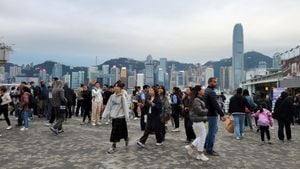A political controversy has erupted surrounding the Delhi Chief Minister's office, where allegations have surfaced claiming the removal of portraits of Dr. B.R. Ambedkar and Bhagat Singh. The Aam Aadmi Party (AAP) has accused the Bharatiya Janata Party (BJP)-led Delhi government of undermining the legacies of these prominent figures, which has sparked intense debates about the political motivations behind such actions.
The situation escalated on February 24, 2025, when Arvind Kejriwal, the AAP's National Convenor and former Chief Minister, voiced his concerns on social media, stating, "The new BJP government of Delhi removed Babasaheb's photo and put up the photo of Prime Minister Modi. This is not right. This has hurt millions of followers of Babasaheb." Kejriwal's remarks encapsulated the outrage felt by many who view Ambedkar, the chief architect of the Indian Constitution, as an important symbol for the Dalit community.
Atishi, AAP leader and former Delhi Chief Minister, echoed this sentiment, declaring, "BJP has shown its true anti-Dalit and anti-Sikh face. Photos of Babasaheb Bhim Rao Ambedkar and Shaheed-e-Azam Bhagat Singh have been removed from the Chief Minister's Office." Her comments added fuel to the fire, positioning the BJP as out of touch with the sentiments of the marginalized communities within Delhi.
Responding to these allegations, BJP MP Manoj Tiwari defended his party, asserting, "These (AAP) are the people who ruined Delhi over the past 11 years. Now, they have no other way except to spread confusion.” Tiwari dismissed the opposition's claims, stating, "Wo log chitr to lagate rahe lekin charitra nahi tha unmein"—translationally meaning “Those people kept putting up pictures but they did not have character.” This fierce retort from Tiwari aimed to project the BJP as the rightful authority who respects the legacies of historical figures, even as they faced accusations of trying to erase them.
The BJP did not take the claims lying down. They quickly shared images purportedly showing the photographs of Ambedkar and Bhagat Singh still present in the Chief Minister's office, albeit relocated from their previous spots. The party's Delhi unit posted on X, stating, "The chambers of the Chief Minister of Delhi, @gupta_rekha and all the ministers are adorned with the pictures of revered Mahatma Gandhi, Babasaheb Bhimrao Ambedkar, Bhagat Singh, the President and the Prime Minister.”
This assertion was met with skepticism. Critics argued the BJP's defense was merely optics, attempting to sidestep the essence of the accusations which hinted at underlying biases against Dalit and Sikh communities. The opposition held firm, questioning if the BJP believed, as Atishi stated, "Does the BJP think PM Narendra Modi is greater than Babasaheb Bhimrao Ambedkar and Bhagat Singh?"
The chaotic exchanges during the assembly session highlighted the contention surrounding this issue. AAP legislators vocally protested, demanding the reinstatement of the portraits, which led to some tensions within the house. Meanwhile, BJP officials emphasized the necessity of showing portraits representing the current leadership, noting the importance of adhering to official protocol which includes images of the Prime Minister and the President alongside revered figures like Gandhi, Ambedkar, and Bhagat Singh.
Interestingly, the exchange of rhetoric between the two parties is not just about portraits; it’s reflective of the larger political narrative at play. The BJP has recently returned to power after defeating the AAP, ending their decade-long rule in the city. Some analysts suggest the new government is leveraging such controversies to assert dominance and solidify their power over the constituency.
CM Rekha Gupta, defending her office's decorum, stated, "This is their tactic to hide their corruption and misdeeds behind Babasaheb Ambedkar and Shaheed Bhagat Singh... Should the photo of the Head of Government not be put up? Should the photo of the President of the country not be put up?”
The heated debate brings forth questions about the representation of historical figures and the narratives constructed around them. Many Delhi residents, especially those from marginalized communities, are closely watching how these exchanges will influence perceptions of both parties moving forward.
Overall, this saga reflects not just governance issues but deep-seated social dynamics where symbols resonate with historical significance and contemporary politics. With both parties firmly entrenched, it remains to be seen how this will evolve, particularly as the political showcasing of such revered icons carries weight far beyond mere aesthetics.



